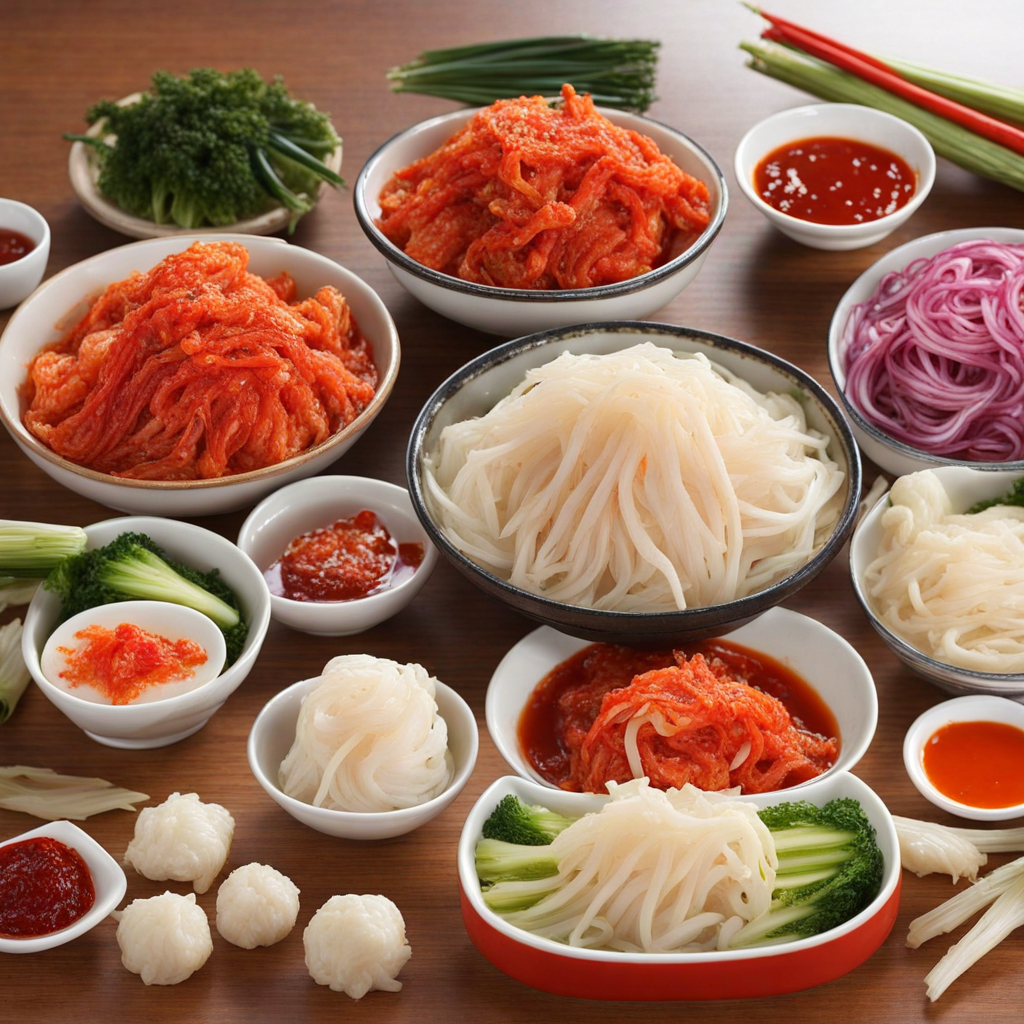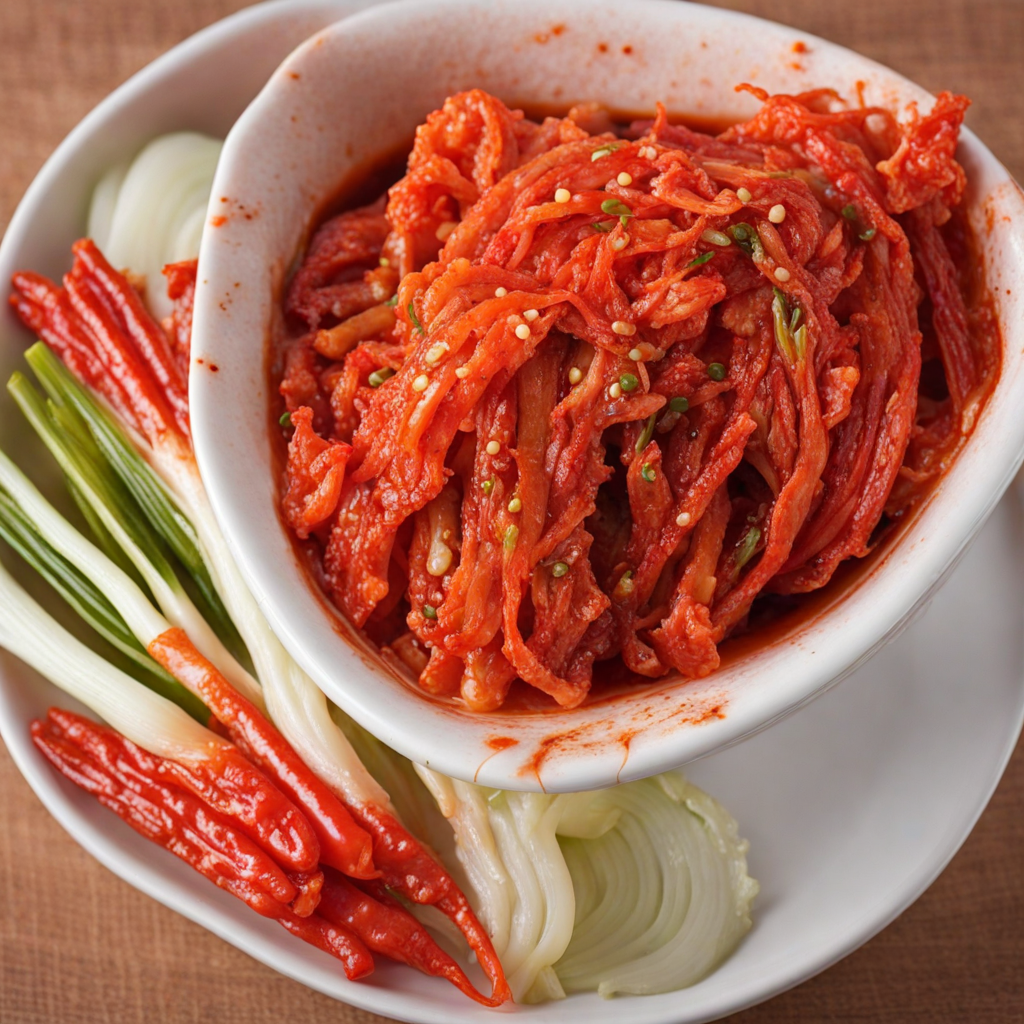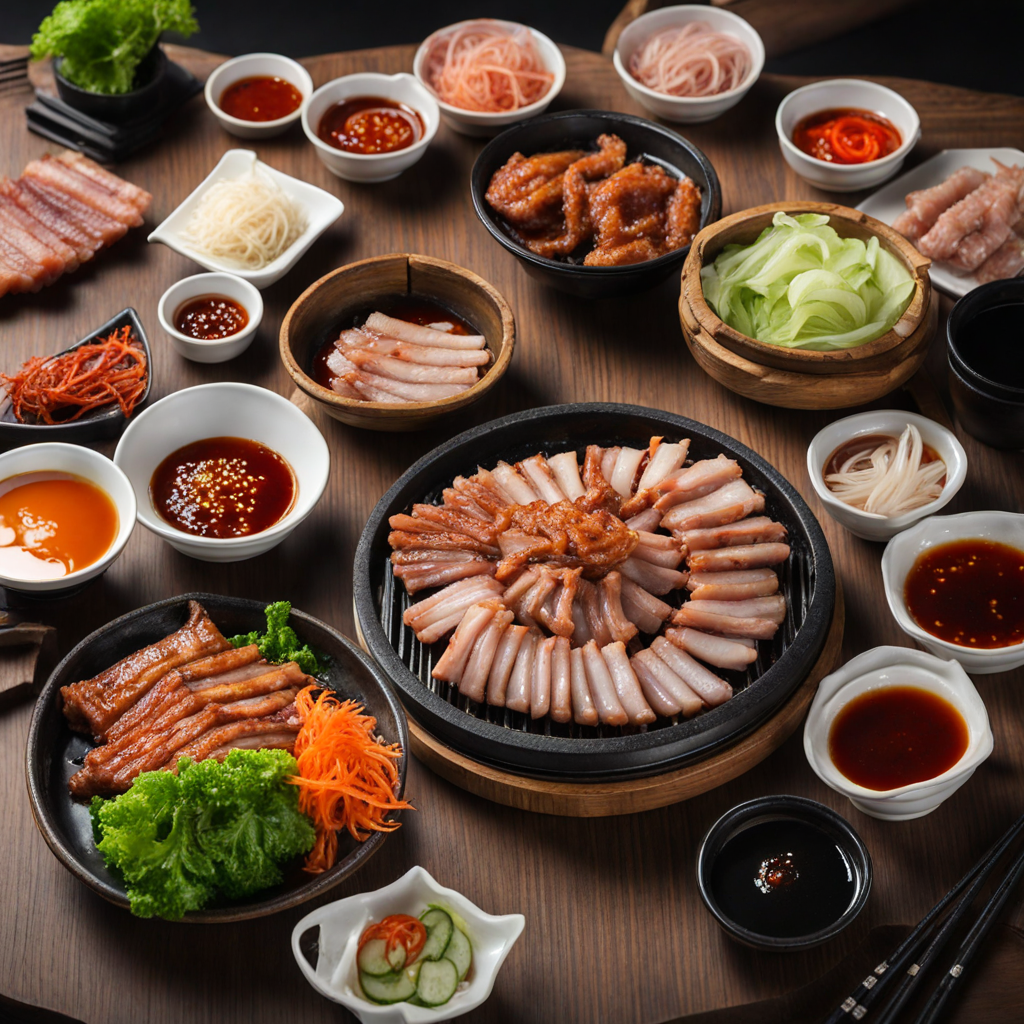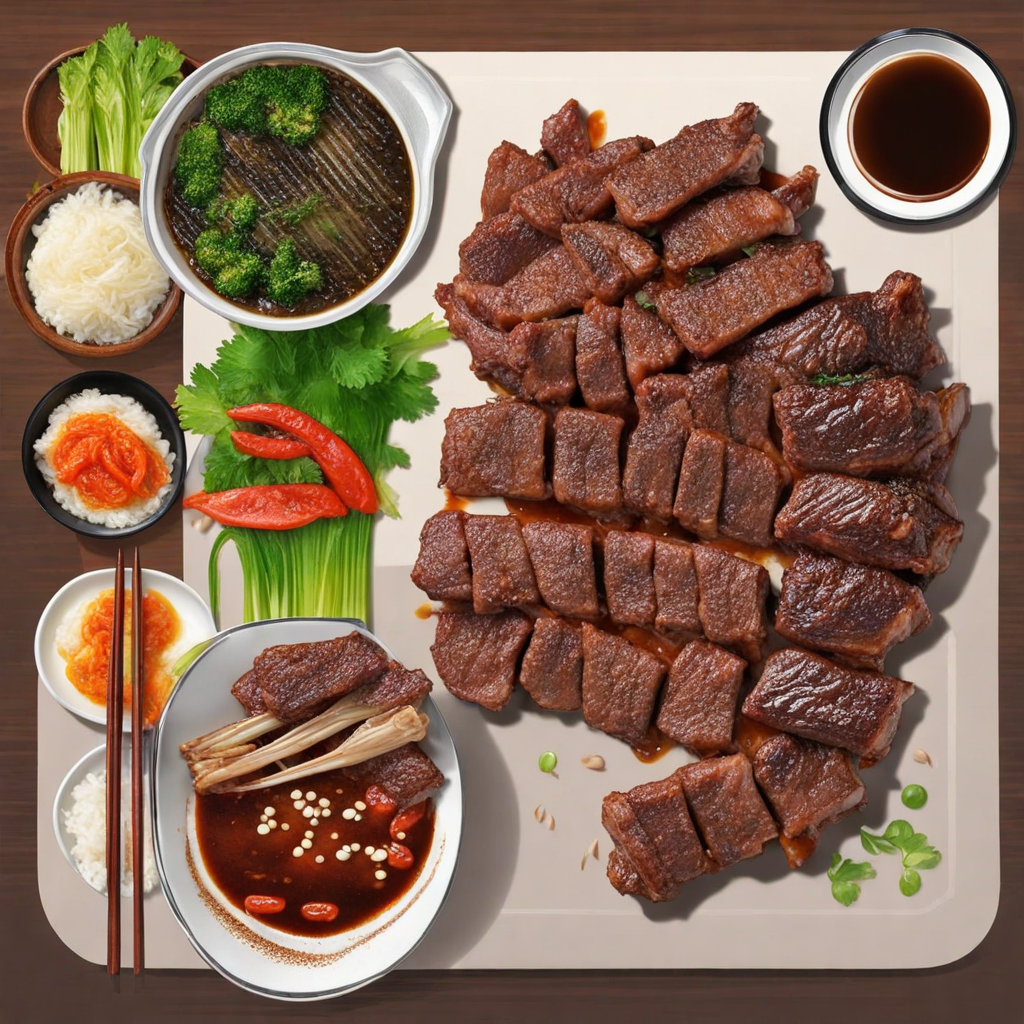Kimchi
Kimchi is a traditional Korean dish made primarily from fermented vegetables, most commonly napa cabbage and Korean radishes. The preparation involves a unique blend of spices, including gochugaru (Korean red pepper flakes), garlic, ginger, and a variety of seafood-based ingredients like fish sauce or salted shrimp. This vibrant medley of flavors creates a complex taste profile that ranges from spicy and tangy to slightly sweet, making each bite a delightful explosion of sensations. The fermentation process not only enhances the flavors but also contributes to the probiotic qualities of the dish, promoting gut health and overall well-being. In addition to its bold flavor, kimchi is incredibly versatile and can be enjoyed in numerous ways. It can be served as a side dish, a topping for rice or noodles, or even incorporated into stews and pancakes. The texture of kimchi can vary, from crunchy to soft, depending on the fermentation time and the specific vegetables used. This adaptability allows kimchi to complement a wide range of dishes, making it a staple in Korean cuisine and an exciting addition to any meal. For those looking to explore new culinary experiences, kimchi offers a taste of South Korea's rich food culture. Its distinct flavor and health benefits have garnered international acclaim, inspiring chefs and home cooks alike to incorporate it into their own recipes. Whether you enjoy it in its traditional form or experiment with fusion dishes, kimchi promises to tantalize your taste buds and expand your palate in unforgettable ways.
How It Became This Dish
Origins of Kimchi Kimchi, a quintessential dish of Korean cuisine, has its roots deeply embedded in the agricultural practices of ancient Korea. The earliest forms of kimchi can be traced back to the Three Kingdoms period (57 BC – 668 AD), where it was primarily a method of preserving vegetables through fermentation. Historically, vegetables were salted and stored in clay pots, a technique that allowed for the consumption of seasonal produce throughout the harsh winters. This preservation method was crucial for survival, especially in a region where the climate could be unforgiving. The earliest varieties of kimchi were simple and made with various vegetables, primarily radishes and cucumbers. However, as time progressed, the incorporation of spices, particularly chili peppers, transformed kimchi into the vibrant dish we recognize today. The introduction of chili peppers to Korea in the 17th century from the Americas was a game-changer, leading to the development of the widely known red pepper paste, gochugaru, which became a staple in kimchi recipes. Cultural Significance of Kimchi Kimchi is more than just a side dish; it embodies the essence of Korean culture and identity. It is served with almost every meal in Korea, symbolizing hospitality and warmth. The importance of kimchi extends beyond mere sustenance; it signifies the values of community and family. Traditional kimjang, the seasonal preparation of kimchi, is a communal event where families and friends gather to make large batches of kimchi for the winter months. This practice not only strengthens familial bonds but also serves as a cultural heritage that has been recognized by UNESCO as an Intangible Cultural Heritage of Humanity. Moreover, kimchi represents the Korean philosophy of balance. The dish is known for its health benefits, attributed to its fermentation process, which enhances its nutritional value. Rich in vitamins, probiotics, and dietary fiber, kimchi is celebrated for its role in promoting health and wellness. This aligns with the Korean principle of "yangnyeom," which emphasizes the balance of flavors and nutrients in food, showcasing how kimchi is both a culinary delight and a healthful addition to the diet. Evolution Over Time Throughout the centuries, kimchi has evolved significantly, reflecting changes in Korean society, agriculture, and culinary preferences. During the Joseon Dynasty (1392–1910), the variety of kimchi expanded, with the introduction of ingredients like garlic and ginger, which added depth and complexity to the flavor profile. This period also saw the emergence of different regional styles of kimchi, each with its unique ingredients and preparation methods, influenced by local climate and agricultural practices. For instance, northern regions might favor napa cabbage kimchi, while southern areas could have a preference for radish-based varieties. The 20th century brought about further transformations in kimchi. The Korean War (1950–1953) and subsequent economic hardships led to a shift in how food was prepared and consumed. Urbanization and industrialization meant that traditional methods of making kimchi were altered; however, the resilience of the Korean people ensured that kimchi remained a staple. The introduction of mass production techniques allowed for the commercialization of kimchi, making it accessible to a broader audience beyond the traditional home kitchens. Global Recognition and Modern Variations In recent decades, kimchi has transcended its local roots to achieve global popularity. With the rise of Korean cuisine worldwide, kimchi has found its way onto international menus and into the hearts of food enthusiasts. This global recognition has led to creative interpretations of the traditional dish, resulting in a variety of modern kimchi recipes that cater to diverse palates. Chefs around the world have experimented by integrating kimchi into fusion dishes, such as kimchi tacos or kimchi burgers, bridging cultural gaps and showcasing the versatility of this iconic food. Moreover, the Korean government's efforts to promote kimchi as a healthy superfood have contributed to its global appeal. Health-conscious consumers are drawn to kimchi for its probiotic properties and potential health benefits, such as improving digestion and boosting the immune system. As a result, packaged kimchi is now widely available in supermarkets and health food stores, making it easier for those unfamiliar with Korean cuisine to incorporate kimchi into their diets. Challenges and Sustainability Despite its popularity, the production and consumption of kimchi face challenges, particularly regarding sustainability and environmental impact. The intensive farming practices used for cultivating the primary ingredients, such as napa cabbage and radishes, can lead to soil depletion and increased pesticide use. Furthermore, the demand for authentic kimchi has prompted concerns over the preservation of traditional methods against the backdrop of mass production. There is a growing movement within South Korea and among Korean communities abroad to promote sustainable practices in kimchi production. This includes using organic farming methods and emphasizing local ingredients to reduce carbon footprints. Additionally, many families are returning to traditional methods of making kimchi, focusing on quality over quantity, which helps preserve the cultural significance of the dish while addressing modern environmental concerns. Conclusion Kimchi is a dish steeped in history, culture, and evolving culinary practices. From its humble beginnings as a method of preservation to its status as a symbol of Korean identity and global culinary phenomenon, kimchi illustrates the dynamic nature of food and its ability to adapt while maintaining its core values. As we look to the future, the ongoing journey of kimchi will likely continue to reflect the changing landscapes of health, sustainability, and cultural exchange, ensuring that this beloved dish remains a vital part of both Korean heritage and global gastronomy.
You may like
Discover local flavors from South Korea







